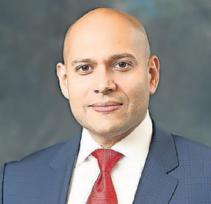Better Health






TELEVISION: 11 shows to get you through the cold weather, D9
PETS: Providing shelter dog adoptions as a birthday present, D9
LIFESTYLE: Trading the wedding feast for a food truck, D9








TELEVISION: 11 shows to get you through the cold weather, D9
PETS: Providing shelter dog adoptions as a birthday present, D9
LIFESTYLE: Trading the wedding feast for a food truck, D9


























It’s 9:30 in the morning at Glenmeadow retirement community in Longmeadow and the exercise class is hopping.
“Those classes are among the most popular of all the programs we provide. The place to be at Glenmeadow at 9:30 in the morning is our exercise class,” said Dr. Kathy Martin, president and CEO of the independent and assisted living community.
According to the World Bank, the average lifespan of people in America is just over 77 years. The average age among the 160 residents at Glenmeadow is 88. As doctors and the medical community in general work to help people live longer, Glenmeadow is bringing life to programs that ensure better living as people age.
“We are living longer. The question would be, are our seniors living better,” said Martin.
Glenmeadow takes a focused approach toward ensuring the people who live there thrive physically, mentally and spiritually. Specialists in senior care assess residents when they begin their new lives in the community, identifying what every person wants and needs to be happy and safe—and the focus is on body, mind and spirit.
The Centers for Disease Control and Prevention reports falls are the leading cause of injury and injury-related death among adults ages 65 and older, saying nearly a third fall and suffer serious injuries such as hip fractures, which may be fatal.
With this in mind, Glenmeadow not only offers exercise classes—it is also nearing the end of a $10 million renovation featuring a new pool, wellness and fitness centers along with added space for its exercise classes.
“The more you improve your physical health, the more likely you are to prevent falls, because you’ve got muscle strength, balance and good core. All of those things are important across the lifespan, regardless of your age, but the more we ensure our residents are actively engaged in some form of exercise, the better it will be for them,” said Martin.
In their first meetings and ongoing interactions with the staff, residents continue to express how much they enjoy and want to continue expanding their minds. Lifelong learning is a key concept at Glenmeadow, which also includes helping seniors live a life of purpose.
“Our residents are incredibly interested in intellectual engagement. That is essential for the population in retirement now, but it’s also







going to be critically important for the baby boomer population as they begin to retire, because it’s something they’re already deeply engaged in,” said Martin.
Cognitive care at Glenmeadow involves everything from playing canasta and other games with friends to conversations over coffee, attending lectures, exhibits, enjoying the symphony, seeing the curtain rise at a local theater or staging any number of events that bring people together to mingle, talk and learn.
“You want to secure your physical health but preserving mental and spiritual health are equally important. There is a critical need to prevent social isolation and to create ways for our older adults to connect with those across the lifespan,” said Martin. “We offer so many programs that keep our residents active and thriving.”
While it’s easy to grab a set of weights, a hand of cards or tickets to a show, spiritual health can be more difficult to grasp. It’s about feeling at peace with your life, having a clear mind, positive direction and a healthy spirit.
“The spiritual component is a strong part of what we offer, and spirituality means something different to every individual. It could be access to religious services, green spaces or meditation. We think holistically about how we define health and what each of our individual seniors needs,” said Martin.
Convenience and nutrition play key roles in feeding the soul, and it’s more than putting away the pots and pans and having someone cook for you. From an executive chef and an on-site dietitian to a dedicated staff of cooks and servers, it’s all considered soul food.
“We take the work out of dining. We have a menu that changes every seven days, and our residents have around 10 entrees to choose from. It’s like going to a restaurant every day and getting to choose nutritious, beautifully presented, delicious meals. And it’s not just kale and vegetables. It’s also steak and dessert,” said Martin.
Nailing it
From mind and body to hair and nails, there are so many components to better living. One of the more attractive fixtures in the newly renovated space is a beauty salon.
“That’s another part of health and wellness—feeling good about how you present yourself to your friends and family,” said Martin. “A lot of great social interaction happens while you’re getting a manicure.”

















Injuries can affect someone when playing sports, exercising or engaging in less strenuous activities of daily life. Softtissue injuries are common and include those that affect the skin, tendons, muscles, and ligaments.
Types of soft-tissue injuries
Soft-tissue injuries may result from an acute trauma (direct force) or through repetitive use, says Verywell Health. There are various types of soft tissue injuries, and the following are some of the most common.
Abrasions, lacerations contusions and avulsions:
These are different types of skin injuries. Lacerations are cuts that open to tissue below the surface of the skin. Abrasions only affect the outermost layers of skin, and like burns, can be first-, second- or third-degree injuries. Avulsions take out chunks of skin and potentially muscle.
Contusions are bruises that cause pain, swelling and discoloration due to bleeding into the tissue below the skin.
Sprains:
A sprain is a stretch or tear of a ligament, which is a strong band of connective tissue between bones, according
to OrthoInfo. Ligaments help stabilize and support the joints. Knees, ankles and wrists are most susceptible to sprains.
Strain:
Johns Hopkins Medicine says a strain is an injury to a muscle or tendon, and is often caused by overuse, stretching or force.
Tendinitis and bursitis:
Tendinitis is irritation or inflammation of a tendon, or the covering of the tendon, which is called a sheath. It results from many small stresses that repeatedly aggravate the tendon. Bursitis is a condition marked by inflammation of small, jelly-like sacs that are located throughout the body (bursae) to help reduce friction between bones and soft tissues. Many people experience bursitis and tendinitis simultaneously.
Tteatment for soft-tissue injuries
In many instances, soft-tissue injuries are not serious, and recovery may not take that long. One of the first treatment methods that doctors suggest is the RICE protocol. This stands for Rest, Ice, Compression, and Elevation. Rest:
is likely warranted. If the injury affects the leg, a doctor may suggest crutches to avoid bearing weight.
Ice:
Cold packs applied for around 20 minutes at a time, several times per day can help reduce swelling and inflammation. Ice should not be directly applied to the skin, warns OrthoInfo.
Compression:
A compression bandage can prevent additional swelling and also help to immobilize the injured area while it heals.
Elevation:
Raising the injured area higher than the heart while resting can reduce swelling. Injuries to the skin, particularly those that expose tissue beneath it, may require more extensive treatment, including sutures or bandaging. A doctor will know best.
In the event that RICE doesn’t solve the problem, an orthopedic professional may need to perform surgery or recommend a different treatment. Physical therapy and instruction on stretching to prevent future injuries may be warranted.
Soft-tissue injuries are common and tend to be easily addressed.






Well-rounded fitness regimens are made up of various components, including strength training.
Strength training can be mischaracterized as an activity best suited to individuals looking to bulk up. However, strength training is about much more than just maxing out on the bench press.
According to the Centers for Disease Control and Prevention, muscle-strengthening activities reduce the risk of falls and fractures, which is a notable benefit for adults of all ages, and particularly so for adults nearing an age where they might experience mobility issues. The National Institute on Aging notes that studies indicate as many as three in 10 individuals over age 70 experience mobility issues that affect their ability to walk, get up out of a chair and climb stairs. Adults in middle-age, and even those for whom retirement remains decades away, can prevent such issues by incorporating strength training into their workout regimens. Novices who want to do just that can
heed these tips to avoid injury as their bodies acclimate to strength training.
Fitness facilities typically have highly trained and knowledgeable personal trainers who can teach members the proper techniques in regard to various strength-building exercises. Many facilities offer one or two free personal trainer consultations to new members, and it’s best that people of all ages take advantage of such benefits. Even if sessions are not complementary, working with a personal trainer is a great way to learn proper form, which is vital to avoiding injury.
The Mayo Clinic notes that cold muscles are vulnerable to injury, so individuals should never begin weight training sessions without a pre-workout warmup. The fitness experts at Gold’s Gym note that 10 minutes of light


cardiovascular exercise on a treadmill, stationary bike or elliptical machine before strength training can increase range of motion, decrease risk for injury and help to create more change in muscles. If necessary, include a foam roll and stretch exercise in your warmup, targeting the muscles that will be used during the ensuing weight training session and any muscles that seem particularly tight. Foam rolling each muscle for 20 to 30 seconds can help to loosen them in advance of a workout.
The adage ‘Rome wasn’t built in a day’ is certainly applicable to weight training. Initial weight training sessions should involve light weights as the body acclimates to a new workout and individuals master the form for each exercise. Weight can be gradually increased as individuals acclimate to lifting weights, a process that the Mayo Clinic suggests can unfold over two to four weeks. However, each individual is different, so if it takes longer than four weeks to add weight, so be it. The key in the early days is to master the form and help the body adjust.
The Mayo Clinic notes that using momentum during a set can lead to injury, as the goal is not to swing or lift the weights as quickly as possible. Slow repetitions that take about two seconds to lift the weight and four or more seconds to lower it can reduce injury risk and also activate muscle fibers in the targeted muscles, which makes strength training more effective over the long haul.
Rest and take pain seriously



Rest is a vital part of a successful weight training regimen, and it’s especially important for novices to rest in between sessions. The Mayo Clinic recommends resting muscles for at least 48 hours. Do not ignore sharp or shooting pain or assume it’s a natural byproduct of the transition to strength training. Cease performing any exercise that causes such pain and consult your physician about what to do.
and
By David Morales
The rising cost of healthcare services in Massachusetts continues to be a challenge for many families with employer-sponsored or individual health insurance. According to a recent report by the Massachusetts Health Policy Commission (HPC), Massachusetts has the second-highest family health insurance premiums in the country. The same report highlighted that two in five Bay Staters are putting off seeing a doctor or going to a hospital because of the high cost of healthcare.
State policy think tanks have found that hospital prices and prescription drug prices are the two main drivers of healthcare costs. It’s no secret that our state has struggled to mitigate healthcare cost growth over the last decade due to escalating hospital and provider prices. In fact, total healthcare expenditures per capita in Massachusetts rose almost 6 percent – over twice the rate of inflation – in 2022, per the Center for Health Information and Analysis (CHIA). The bottom line: healthcare costs are growing

faster than household income, and that’s a huge problem for all of us.
The case for primary care
Enhancing access to primary care can improve whole health and lower the annual rate of growth in healthcare costs. According to the Purchaser Business



transform the existing healthcare system from a model that rewards “sick care” toward a model that prioritizes primary care, whole health, and affordability for consumers, employers, and taxpayers. Whole health is not only about your physical health, but the behavioral, emotional, and social factors that affect your overall well-be-


journey, manage chronic conditions, and coordinate care to ensure tests aren’t needlessly repeated and that we are on track with our health habits. They can also screen for mental health conditions like anxiety and depression and provide treatment or refer patients to therapists or other services. Moreover, regular engagement with a
to need care at an emergency room or through a hospital admission, which can lead to higher costs. But alarmingly, studies show declining access to primary care in recent years. We must work together to shift resources from “sick care” to primary care, community health centers, digital tools, and home-based services that empower people
David Morales is the general manager of Wellpoint, a health benefits company serving state and municipal employees, retirees, and their families insured through the Commonwealth of Massachusetts Group Insurance Commission.
Group on Health, “adults who regularly see a primary care physician have 33 percent lower healthcare costs and 19 percent lower odds of dying prematurely than those who see only a specialist.” However, spending on primary care represented only 6.7 percent of total medical spending for commercially insured members, according to data from CHIA. That’s why we need to
ing. Non-clinical factors like access to nutritious food and other social supports can determine up to 80 percent of health outcomes. Primary care physicians (PCPs) are well positioned to help their patients better understand and manage such drivers of health – think of them as the quarterbacks of healthcare. PCPs are equipped to empower us in our health
PCP drives more immunizations, education around the importance of healthy habits like diet and exercise, and counseling about alcohol and drug use as well as smoking cessation.
In fact, studies have shown that people who have a relationship with a trusted PCP are more likely to have higher satisfaction with the healthcare system and are less likely
to live healthier lives while lowering the total cost of care.
A simple step we can all take is to have an annual wellness exam with a PCP each year. Your health plan can help you find one covered by your plan.
Advancing value-based payment models
One way to enhance primary care is to implement reimbursement models that
prioritize primary care and incent PCPs to keep people healthy. At Wellpoint, we are working to accelerate growth in value-based payment models that reward primary care providers for care coordination, better health outcomes, and care experience rather than on the volume of services provided under the traditional fee-for-service system. Our goal is to align clinical and financial incentives so that primary care providers are empowered to provide better care at lower costs. While primary care is not a panacea, it is an underutilized resource that requires prioritization, education, investment, and meaningful incentives if we are serious about lowering healthcare costs. The more we work together to expand access to primary care and unlock market forces that empower consumers to take better control of their health, the closer we can get to making healthcare affordable in Massachusetts.
Learn more at wellpointmass.com


Your whole health is our whole poin t
For nearly four decades, Wellpoint (formerly UniCare) has served individuals with health coverage through the Group Insurance Commission of Massachusetts.
Wellpoint plans give you the freedom to choose: Referrals not needed Primary care doctor not required wellpointmass com








Exercise is widely recognized as a vital component of a healthy lifestyle.
Despite that, a recent analysis of data from the 2020 National Health Interview Survey found that more than two-thirds of individuals are not getting enough exercise. Though the survey was conducted amid the onset of the COVID-19 pandemic, which suggests the overall figures might be somewhat lower than they might have been had the data been collected in a more typical year, just 28 percent of respondents were
meeting the physical activity guidelines established by the Centers for Disease Control and Prevention. Routine exercise is beneficial for people of all ages, and seniors are no exception. Aging adults who want to be more physically active but think they are among the 72 percent of individuals who aren’t meeting CDC exercise guidelines can speak with their physicians and ask these three questions to ensure the transition to a less sedentary lifestyle goes smoothly. Should I get a heart checkup?
Doctors may already be monitoring aging individuals’
hearts even if they have not exhibited symptoms of heart problems in the past. However, it’s best to discuss heart health in greater detail prior to beginning a new fitness regimen. In an interview with Penn Medicine, Neel Chokshi, MD, MBA, medical director of Penn Sports Cardiology and Fitness Program, noted the risk of heart attack or cardiac complications slightly increases when individuals begin to participate in a moderate or intense activity. So a physician might want to conduct a heart checkup in order to determine if a patient has an underlying heart condition.

Which types of activities should I look to?
A physician also can recommend certain activities depending on a person’s age and medical background. Though exercise is beneficial for everyone, certain activities may not be. For example, AdventHealth notes that high-impact activities like jogging and jump rope may not be suited for individuals with arthritis. In addition, aging individuals with physical limitations that require them to use a wheelchair should not write off their ability to exercise, as physicians can recommend exercises for patients with mobility issues as well.


Should I take extra caution while on medication?
Prescription medication use is another variable that must be taken into consideration before beginning a new exercise regimen. The CDC notes that roughly 84 percent of adults between the ages of 60 and 79 use one or more prescription medications. Each medication produces different effects, and a 2016 study published in the Methodist DeBakey Cardiovascular Journal noted that certain medications evoke an acute drop in blood pressure, which can disturb balance and increase fall risk, while others actually facilitate greater improvements in health outcomes. That means the dynamic between medications and exercise is unique to each medication, which underscores the importance of speaking with a physician whenever a fitness regimen is started or tweaked and/or a new medication is prescribed. These are just three of the questions seniors can ask when discussing exercise with their physicians. Seniors are urged to ask any additional questions they might have during such discussions.














